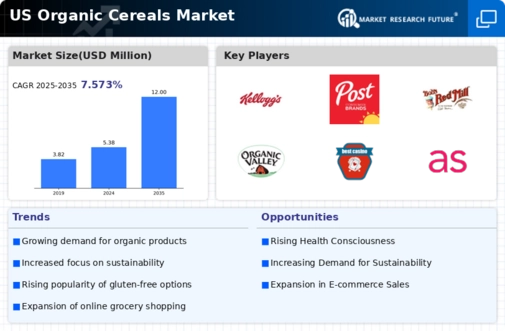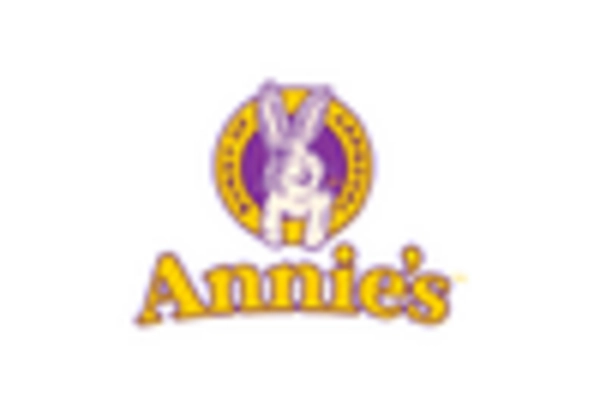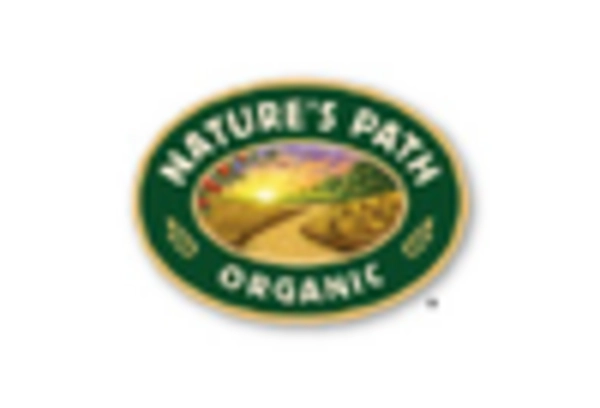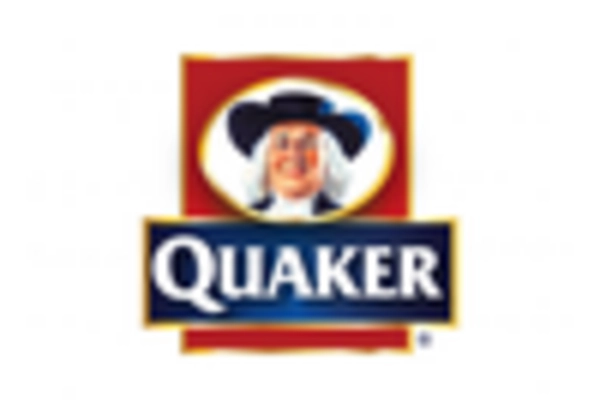Influence of Dietary Trends
The organic cereals market is significantly impacted by evolving dietary trends, such as the rise of plant-based diets and gluten-free options. As more consumers adopt these dietary preferences, the demand for organic cereals that align with these trends is increasing. For instance, the market for gluten-free organic cereals has expanded, reflecting a growing awareness of gluten sensitivities and the desire for healthier breakfast options. Data indicates that the gluten-free segment within the organic cereals market has grown by approximately 15% over the past year. This trend suggests that manufacturers are likely to focus on developing innovative products that cater to these dietary needs, thereby enhancing their market presence and appealing to a broader consumer base.
Increased Retail Availability
The organic cereals market is benefiting from increased retail availability, as more grocery stores and supermarkets are expanding their organic product offerings. This trend is particularly evident in the United States, where major retailers are dedicating more shelf space to organic cereals, making them more accessible to consumers. According to industry reports, the number of retail outlets carrying organic products has increased by over 20% in recent years. This enhanced availability not only facilitates consumer access but also encourages trial and adoption of organic cereals. As retailers recognize the profitability of organic products, the organic cereals market is poised for further growth, driven by improved distribution channels and consumer convenience.
Impact of Food Labeling Regulations
The organic cereals market is also shaped by the impact of food labeling regulations, which are designed to provide consumers with clear information about the products they purchase. In the United States, the USDA organic certification has become a trusted standard, ensuring that products labeled as organic meet specific criteria. This regulatory framework not only enhances consumer trust but also encourages manufacturers to adhere to organic practices. As consumers increasingly seek transparency in food labeling, the organic cereals market is likely to see continued growth, as certified organic products are perceived as safer and healthier options. The emphasis on labeling may further drive competition among brands, leading to innovation and improved product offerings.
Rising Consumer Awareness of Nutrition
The organic cereals market is experiencing a notable surge in demand, driven by an increasing consumer awareness of nutrition and health benefits associated with organic products. As individuals become more informed about the adverse effects of synthetic additives and pesticides, they are gravitating towards organic cereals, which are perceived as healthier alternatives. According to recent data, the organic food sector has seen a growth rate of approximately 10% annually, with cereals being a significant contributor. This heightened awareness is not only influencing purchasing decisions but also encouraging manufacturers to innovate and expand their organic product lines. Consequently, the organic cereals market is likely to continue its upward trajectory as consumers prioritize health and wellness in their dietary choices.
Growing Interest in Sustainable Agriculture
The organic cereals market is increasingly influenced by a growing interest in sustainable agriculture practices. Consumers are becoming more aware of the environmental impact of conventional farming methods, leading to a preference for products that are produced sustainably. This shift is prompting farmers and producers to adopt organic farming techniques, which are perceived as more environmentally friendly. Data suggests that the organic farming sector has expanded by approximately 12% in the last year, reflecting this trend. As sustainability becomes a key consideration for consumers, the organic cereals market is likely to benefit from this movement, as more individuals seek to support environmentally responsible practices through their purchasing decisions.

















Leave a Comment